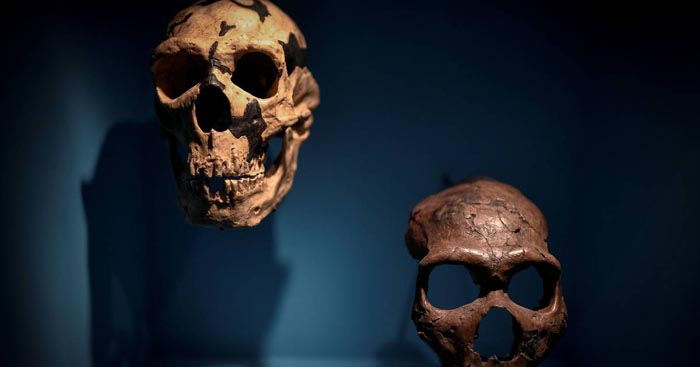
‘Virtual fossil’ reveals last common ancestor of humans and Neanderthals’
New digital techniques have allowed researchers to predict structural evolution of the skull in the lineage of Homo sapiens and Neanderthals, in an effort to fill in blanks in the fossil record, and provide the first 3D rendering of their last common ancestor. The study suggests populations that led to the lineage split were older than previously thought.
We know we share a common ancestor with Neanderthals, the extinct species that were our closest prehistoric relatives. But what this ancient ancestral population looked like remains a mystery, as fossils from the Middle Pleistocene period, during which the lineage split, are extremely scarce and fragmentary.
Now, researchers have applied digital “morphometrics” and statistical algorithms to cranial fossils from across the evolutionary story of both species, and recreated in 3D the skull of the last common ancestor of Homo sapiens and Neanderthals for the first time.
The “virtual fossil” has been simulated by plotting a total of 797 “landmarks” on the cranium of fossilised skulls stretching over almost two million years of Homo history — including a 1.6 million-year-old Homo erectus fossil, Neanderthal crania found in Europe and even 19th century skulls from the Duckworth collection in Cambridge.
The landmarks on these samples provided an evolutionary framework from which researchers could predict a timeline for the skull structure, or ‘morphology’, of our ancient ancestors. They then fed a digitally-scanned modern skull into the timeline, warping the skull to fit the landmarks as they shifted through history.
This allowed researchers to work out how the morphology of both species may have converged in the last common ancestor’s skull during the Middle Pleistocene — an era dating from approximately 800,000 to 100,000 years ago.
The team generated three possible ancestral skull shapes that corresponded to three different predicted split times between the two lineages. They digitally rendered complete skulls and then compared them to the few original fossils and bone fragments of the Pleistocene age.
This enabled the researchers to narrow down which virtual skull was the best fit for the ancestor we share with Neanderthals, and which timeframe was most likely for that last common ancestor to have existed.
Previous estimates based on ancient DNA have predicted the last common ancestor lived around 400,000 years ago. However, results from the ‘virtual fossil’ show the ancestral skull morphology closest to fossil fragments from the Middle Pleistocene suggests a lineage split of around 700,000 years ago, and that — while this ancestral population was also present across Eurasia — the last common ancestor most likely originated in Africa.
